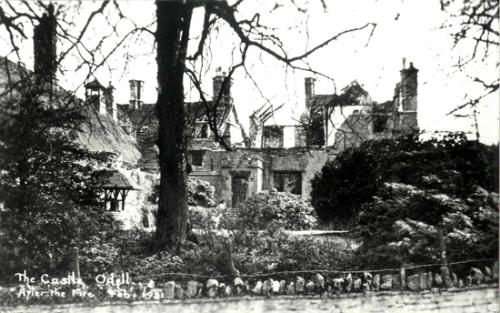Fire
Fire!
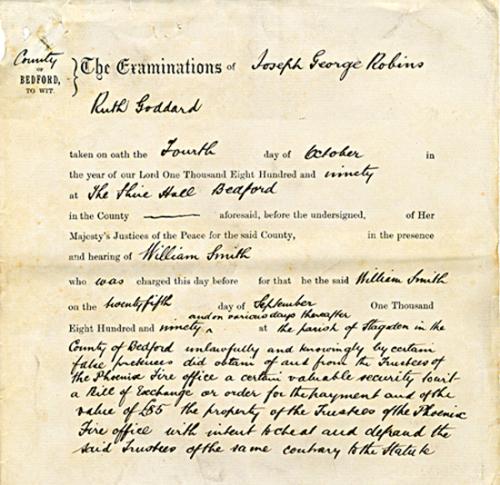
The Document of the month for September is a deposition concerning an incident after a fire which occurred in the village of Stagsden 122 years ago this month, in September 1890 (QSR1890/4/5/4). Following the fire there were insurance claims made, one being made by Mr William Smith, innkeeper of the Dog & Duck. The legitimacy of his claim, however, was doubted and on the 25th September 1890, he was charged with unlawfully trying to defraud the Trustees of the Phoenix Fire Office for the sum of an £85. Following this charge, the source proceeds to show 'examinations' of the witnesses connected with the crime. These witnesses included Mr Smith's adopted daughter, Ruth Goddard, Police Constable Charles Harlow and the investigator of the insurance claim, Joseph George Robins.
In such a small village as Stagsden, this occurrence, expectedly, created a lot of interest. Below we have a print of the Bedford Mercury paper (available on microfilm), dated the 27th September 1890. The article details the severe damage caused to the village with 'five houses burnt and over twenty people homeless', and comments on the reactions of the community to the fire. The second article, written on the 18th October, explains the arrest and conviction of William Smith following the fire.
Article 1: Bedfordshire Mercury 27th September 1890

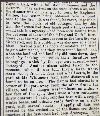


Article 2: 18th October 1890



The technologies used to tackle a fire such as the one in Stagsden, in 1890, were far from the advanced equipment we see today. In 1890 communities replied on horse-drawn fire engines, sometimes operated by volunteer brigades, such as in Bedford. Pictured below are some examples of such equipment. The first picture, taken in the 1890s, shows the Bedford Volunteer Fire Brigade practising their pump drill at Longholme lake (Z50/9/799). The second picture shows the Biggleswade fire engine with local firemen on board (Z50/142/382).
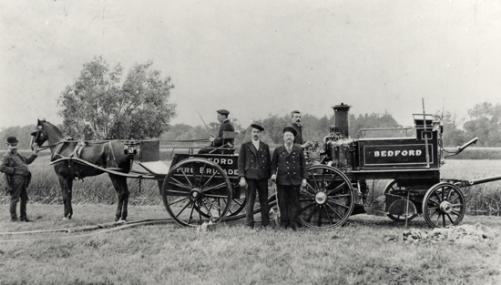
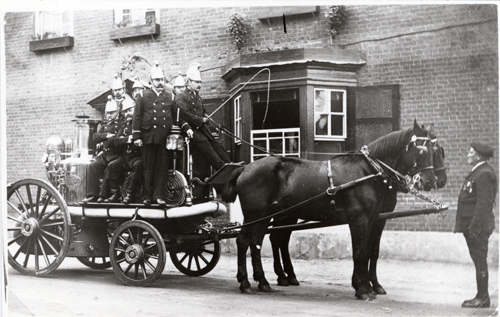
The organisation of Fire Brigades in the county can also be shown through various records kept by each district. Evidence of this nature can be found, for example, in brigade account records books. The document below shows various pages from Sharnbrook's Account book, documenting its income and expenditure (X106/581). The first image shows the brigade's expenditure, in 1890, which include training expenses and the cost of transporting a hose from Sharnbrook to London. In addition the second image indicates expenses from 1889 including the essential 'ale + refreshments'. The third image below shows the income of the brigade in 1890. The names express who had paid for their services including the County Fire Office and the Guardian Fire Office.

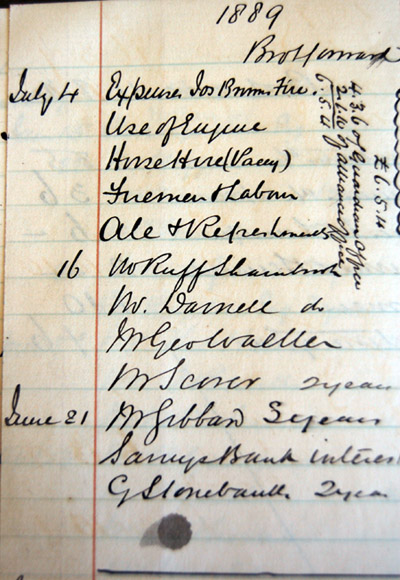
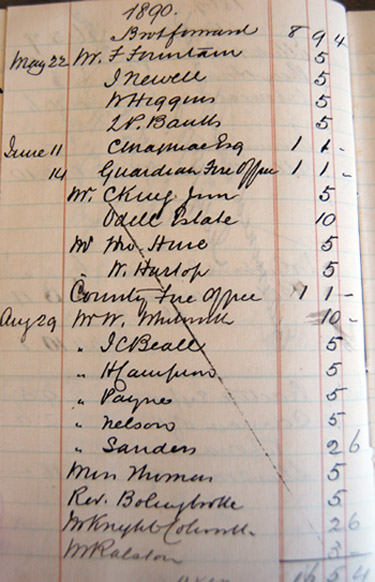
Interestingly the last image of the account book also refers to a payment from the Odell Estate. This site, specifically Odell Castle, was later to become victim to its own damaging fire. On the morning of the 19th February 1931 the historic site, then owned by Mr Rowland Crewe Alston, was badly burned. Unlike the controversial origin of the Stagsden fire, the fire at Odell Castle was believed to have been started by a accidental malfunction in the boiler house. According to the Bedford Times, the fire was attended to by the fire brigades of Rushden and Bedford. The Castle was severely damaged, as can be seen in the picture below, taken after the fire [Z50/86/19]. The estate was not occupied again until Lord Luke, who purchased the property in 1934, was able to rebuild it sufficiently and his family were able to move in, in 1962.
